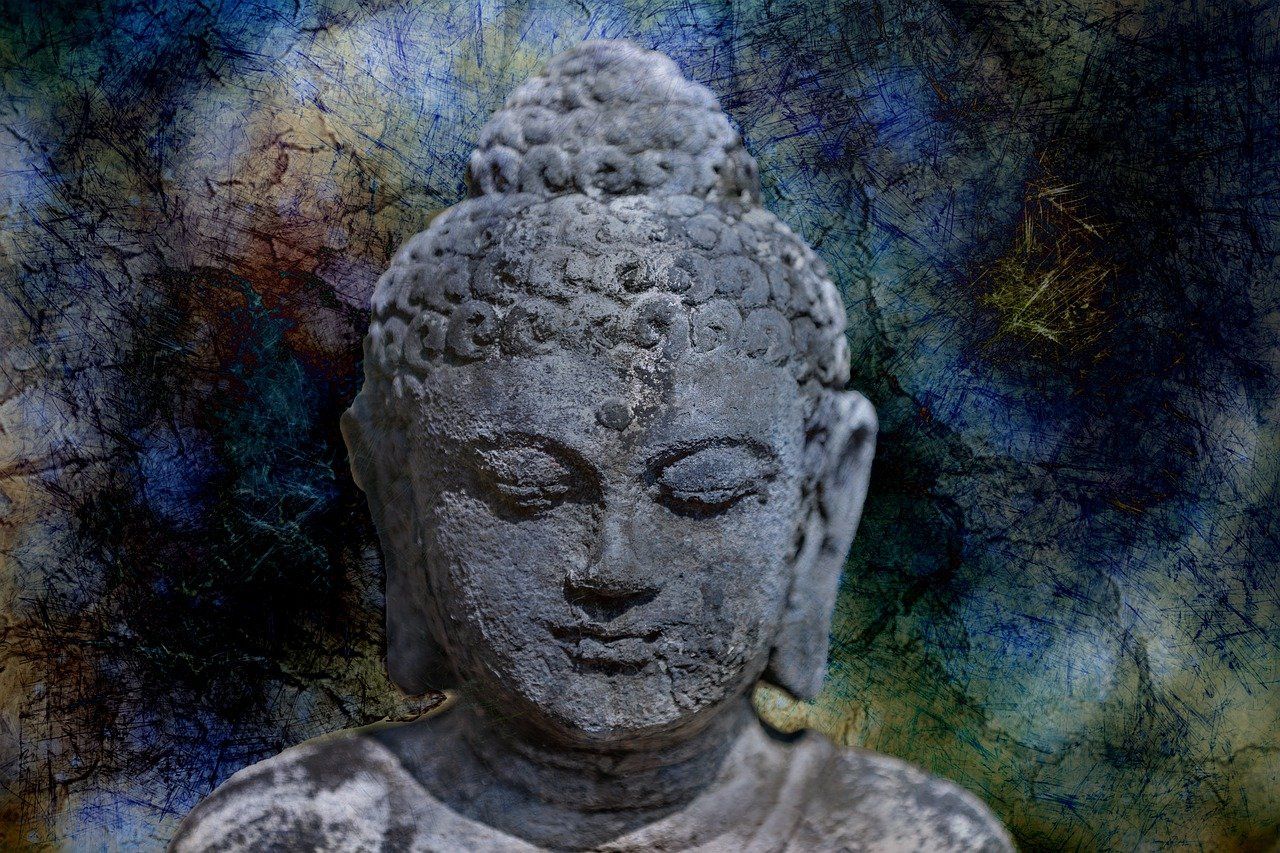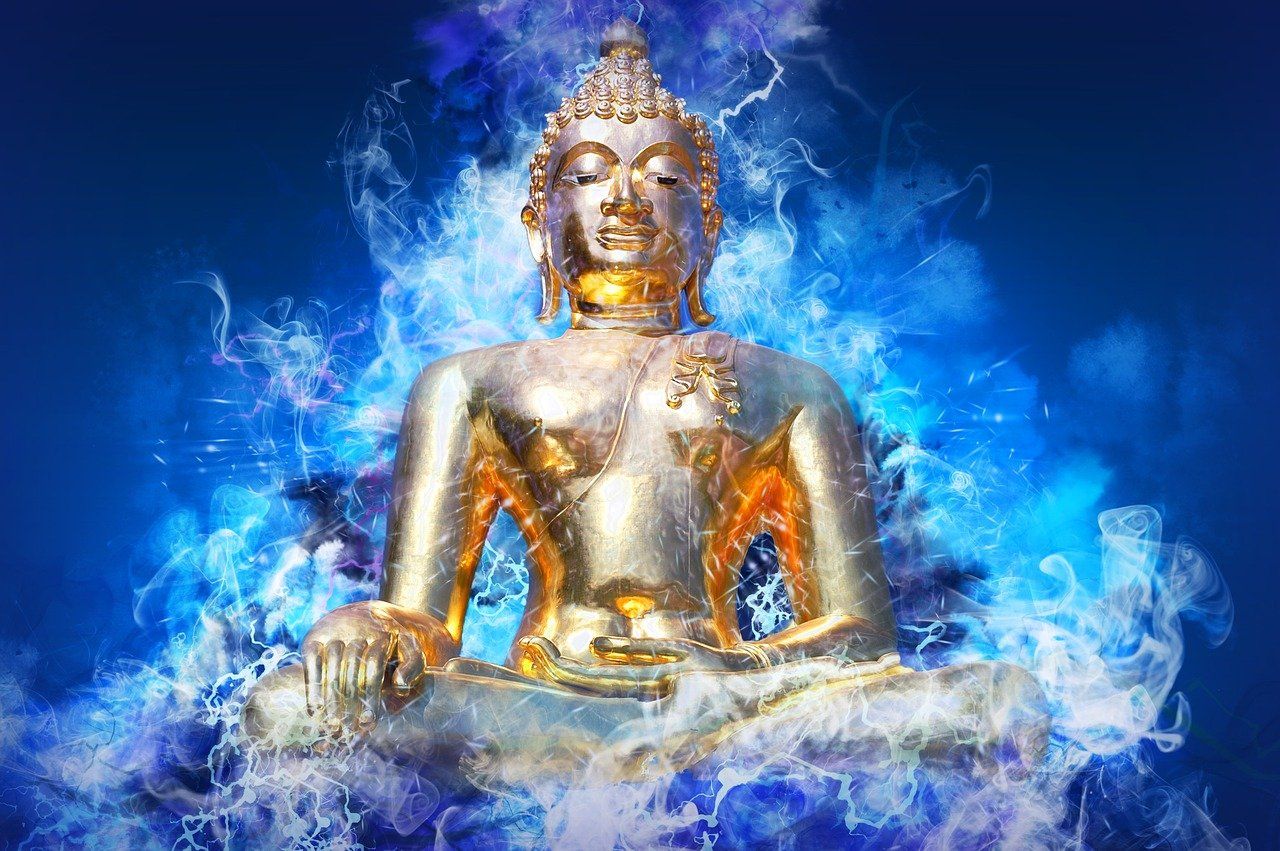The Way of Meditation Blog
Bringing Ancient Wisdom Into The Modern World
Contemplative Prayer And Christian Meditation
Giovanni Dienstmann • April 28, 2015
Christian Meditation
Meditation is defined a mental exercise of regulating attention, either by focusing it on a single object ( “ focused attention meditation”), or by keeping it open flowing through whatever is in our present moment experience (“open monitoring meditation”). It involves relaxing the body, calming the mind, going beyond discursive thinking, and looking inside. The objective usually is to take you to deeper states of consciousness, to experience yourself beyond the mind, or to “see things as they are”.
Contemplative practice , which is a broader category and other types, such as prayer, inspirational reading, and visualization. In this post I explore contemplative practices that come from the Christian tradition. Some theologians see meditation as distinct from prayer, but others do not; those who make a distinction define meditation as inwardly directed, and prayer as directed to something outside the self.
Contemplative practice , which is a broader category and other types, such as prayer, inspirational reading, and visualization. In this post I explore contemplative practices that come from the Christian tradition. Some theologians see meditation as distinct from prayer, but others do not; those who make a distinction define meditation as inwardly directed, and prayer as directed to something outside the self.
In Eastern traditions (Hinduism, Buddhism, Jainism, Daoism) meditation is usually practiced with the purpose of transcending the mind and attaining enlightenment. On the other hand, in the Christian tradition the goal of contemplative practices is, one may say, moral purification and deeper understanding of the Bible; or a closer intimacy with God/Christ, for the mystic stream of the tradition.
The forms of Christian contemplative practice explored in this post are:
contemplative prayer — which usually involves the silent repetition of sacred words or sentences, with focus and devotion
contemplative reading — or simply “contemplation”, which involves thinking deeply about the teachings and events in the Bible.
Apart from the differences in intention and worldview , the mechanics of contemplative prayer are somewhat similar to the Hindu mantra meditation
; and sitting with God is similar to some meditations of bhakti yoga . “Contemplative reading” is mostly a contemplative practice, not a meditation practice, due to the use of discursive thinking and reasoning. Do be noted, however, that before the studies of Eastern philosophy came to the West, the word “meditation” was used basically as synonymous with “contemplation”, and this contemplative reading practice was ofter called simply “meditation”.
“Contemplative reading” is mostly a contemplative practice, not a meditation practice, due to the use of discursive thinking and reasoning. Do be noted, however, that before the studies of Eastern philosophy became more popular in the West (19th century), the word “meditation” was used basically as synonymous with “contemplation”, and this contemplative reading practice was ofter called simply “meditation”.
Unlike the other meditation techniques (http://liveanddare.com/types-of-meditation) taught in this site, which do not require any belief, the contemplative practices discussed in this article presuppose a Christian belief and worldview, and are based on the Bible.
The exercises presented in this article may not please all Christians. But there are over 41,000 Christians denominations , many of them disagreeing with each other on several key points, while all believing that their’s is the only correct way of interpreting the teachings – so what is the harm in you interpreting Christ according to your own heart and reason?
“Be still and know that I am God.” (Psalms 46:10)
Modern Contemplative Prayer
This movement has two main streams. One practices centering prayer – also known as listening prayer and breath prayer – , and is associated with renowned Trappist monks. The other stream calls their practice Christian Meditation , and was created by the Irish Benedictine monk John Main, who learned mantra meditation from a Hindu swami when he was serving in Malaysia.
The forms of Christian contemplative practice explored in this post are:
contemplative prayer — which usually involves the silent repetition of sacred words or sentences, with focus and devotion
contemplative reading — or simply “contemplation”, which involves thinking deeply about the teachings and events in the Bible.
“sitting with God”
— a silent meditation, usually preceded by contemplation or reading, in which we focus all our mind, heart and soul on the presence of God
“Contemplative reading” is mostly a contemplative practice, not a meditation practice, due to the use of discursive thinking and reasoning. Do be noted, however, that before the studies of Eastern philosophy became more popular in the West (19th century), the word “meditation” was used basically as synonymous with “contemplation”, and this contemplative reading practice was ofter called simply “meditation”.
Unlike the other meditation techniques (http://liveanddare.com/types-of-meditation) taught in this site, which do not require any belief, the contemplative practices discussed in this article presuppose a Christian belief and worldview, and are based on the Bible.
The exercises presented in this article may not please all Christians. But there are over 41,000 Christians denominations , many of them disagreeing with each other on several key points, while all believing that their’s is the only correct way of interpreting the teachings – so what is the harm in you interpreting Christ according to your own heart and reason?
“Be still and know that I am God.” (Psalms 46:10)
1) CONTEMPLATIVE PRAYER
This movement has two main streams. One practices centering prayer – also known as listening prayer and breath prayer – , and is associated with renowned Trappist monks. The other stream calls their practice Christian Meditation , and was created by the Irish Benedictine monk John Main, who learned mantra meditation from a Hindu swami when he was serving in Malaysia.
How to practice:
Choose a sacred word from Christian tradition, such as Lord, Father, Jesus, Mary, Abba, Mercy, Love . The Aramaic word maranatha (“Come, Lord!”) is often used.
For 10 to 30 minutes, repeat the sacred word. It shouldn’t be repeated only mechanically, but with focus and emotional content. Each repetition should be like a prayer.
When thoughts or emotions arise, bring the mind back to the sacred word.
John Main’s practice requires continual repetition of the word for the entire meditation period. According to him, one should keep the mind on the sacred word, no matter what thoughts or emotions arise. For Fr. Keating, moment of silence are ok, and there was no need for the word at that point.
[Credits to Derek Cameron for the historical details and clarification about the differences among the two streams.]
See also the section on Lectio Divina , below.
Further reading:
One form of contemplative prayer is called Hesychasm , or the Jesus Prayer. It dates to the days of the Desert Fathers, who lived in extreme poverty and deprivation at the dawn of Christianity. The word comes from the Greek hesychia , meaning “stillness” or “silence”. This form of practice involves the repetition of short sacred words or sentences. It comes from the Eastern Orthodox and Byzantine Rite Catholic churches. Monks in Greece still pray this way for hours at a time.
Choose a sacred word from Christian tradition, such as Lord, Father, Jesus, Mary, Abba, Mercy, Love . The Aramaic word maranatha (“Come, Lord!”) is often used.
For 10 to 30 minutes, repeat the sacred word. It shouldn’t be repeated only mechanically, but with focus and emotional content. Each repetition should be like a prayer.
When thoughts or emotions arise, bring the mind back to the sacred word.
John Main’s practice requires continual repetition of the word for the entire meditation period. According to him, one should keep the mind on the sacred word, no matter what thoughts or emotions arise. For Fr. Keating, moment of silence are ok, and there was no need for the word at that point.
[Credits to Derek Cameron for the historical details and clarification about the differences among the two streams.]
See also the section on Lectio Divina , below.
Further reading:
- Centering Prayer and Inner Awakening
- Son of Man: The Mystical Path to Christ
- Intimacy with God: An Introduction to Centering Prayer
- Contemplative Prayer
- Contemplative Outreach (Centering Prayer website)
- World Community for Christian Meditation (Christian Meditation website)
One form of contemplative prayer is called Hesychasm , or the Jesus Prayer. It dates to the days of the Desert Fathers, who lived in extreme poverty and deprivation at the dawn of Christianity. The word comes from the Greek hesychia , meaning “stillness” or “silence”. This form of practice involves the repetition of short sacred words or sentences. It comes from the Eastern Orthodox and Byzantine Rite Catholic churches. Monks in Greece still pray this way for hours at a time.
This school of practice emphasizes the need having times of isolation and sensory deprivation, so that direct communion with the divine can be achieved and sustained. One of the earliest influences for this practice was the fifth-century monk Benedict of Nursia, who is also known as the father of Western Monasticism. His motto was ora et labora (pray and work). Other influences were Evagrius Ponticus and John Cassian.
The way of practicing is similar to that of centering prayer and John Main’s Christian Meditation (explained above). The main difference is basically the sentence that is chosen for repetition, and the differences in theology behind the practice. Also, there are specific instructions for synchronizing the breathing with the prayer.
How to practice:
Lectio Divina
Lectio Divina literally means “divine word” or “divine reading”. It involves choosing a short passage from the scripture, memorising it, and then repeating it silently for some minutes. During practice, all ideas, thoughts and images related to the passage are allowed to arise spontaneously in the mind. It is somewhat in between contemplative reading and contemplative prayer.
The way of practicing is similar to that of centering prayer and John Main’s Christian Meditation (explained above). The main difference is basically the sentence that is chosen for repetition, and the differences in theology behind the practice. Also, there are specific instructions for synchronizing the breathing with the prayer.
How to practice:
- Choose one of the suggested sentences. The favored ones are: “ O God, make speed to save me. O Lord, make haste to help me. ” and “ Lord Jesus Christ, Son of God, have mercy on me, a sinner ”.
- For 10 to 30 minutes, repeat the sacred word. It should be repeated not only mechanically, but with focus and emotional content. Each repetition should be like a prayer.
- Synchronize your breathing. For instance, when breathing in one says “ Lord Jesus Christ, Son of God… ” and when breathing out one completes the sentence, “ have mercy on me, a sinner ”.
- When thoughts or emotions arise, bring the mind back to the sacred word.
- “Pray without ceasing” – try to maintain the repetition of the prayer even while doing other activities during your day.
- The Art of Prayer: An Orthodox Anthology
- The Rule of Benedict: A Spirituality for the 21st Century
- The Mountain of Silence: A Search for Orthodox Spirituality
- Seeking God: The Way of St. Benedict
Lectio Divina literally means “divine word” or “divine reading”. It involves choosing a short passage from the scripture, memorising it, and then repeating it silently for some minutes. During practice, all ideas, thoughts and images related to the passage are allowed to arise spontaneously in the mind. It is somewhat in between contemplative reading and contemplative prayer.
On top of the silent repetition, some people also visualize scenes from the life of Jesus, or other biblical tales, in order to create a more engaged experience. The “Spiritual Exercises” of Saint Ignatius of Loyala is basically a more elaborate form of this, which integrates other elements.
Some people pick excerpts from the works of famous Saints, such as the songs of St. John of the Cross.
“Contemplation is a simple intuition of God, produced immediately in the soul by God and giving the soul a direct but obscure and mysterious experiential appreciation of God.” (Thomas Merton)
Further reading:
2) CONTEMPLATIVE READING
Meditations on the teachings
“By meditation I mean prolonged reasoning with the understanding, in this way. We begin by thinking of the favor which God bestowed upon us by giving us His only Son; and we do not stop there but proceed to consider the mysteries of His whole glorious life.” (Teresa of Avila)
Some people pick excerpts from the works of famous Saints, such as the songs of St. John of the Cross.
“Contemplation is a simple intuition of God, produced immediately in the soul by God and giving the soul a direct but obscure and mysterious experiential appreciation of God.” (Thomas Merton)
Further reading:
- Christian Mystics: 365 Readings and Meditations
- Prayers of the Cosmos Meditations on the Aramaic Words of Jesus
- Meditations with Teresa of Avila
Meditations on the teachings
“By meditation I mean prolonged reasoning with the understanding, in this way. We begin by thinking of the favor which God bestowed upon us by giving us His only Son; and we do not stop there but proceed to consider the mysteries of His whole glorious life.” (Teresa of Avila)
The Bible mentions meditate or meditation about twenty times, mostly all in the Book of Psalms. The meaning ascribed to meditation, in the scripture, is that of thinking deeply, pondering, reflecting. For example, in Joshua 1:8: “Do not let this Book of the Law depart from your mouth; meditate on it day and night.”
Thus, this form of contemplative practice involves reading the Bible, or the texts from the Christian Saints, and deeply pondering over the meaning of the words. As the Wikipedia describes it, it is “ the process of deliberately focusing on specific thoughts (such as a bible passage) and reflecting on their meaning in the context of the love of God. ” Therefore it uses one’s faculties of reasoning and imagination, and aims to heighten the personal relationship based on the love of God that marks Christian communion.
Rick Warren, in The Purpose Driven Life (Zondervan), describes meditation this way: “ Meditation is focused thinking. It takes serious effort. You select a verse and reflect on it over and over in your mind…if you know how to worry, you already know how to meditate. (…) No other habit can do more to transform your life and make you more like Jesus than daily reflection on Scripture. (…) If you look up all the times God speaks about meditation in the Bible, you will amazed at the benefits He has promised to those who take the time to reflect on His Word throughout the day “.
Spiritual Exercises of Saint Ignatius of Loyala
One more elaborate and advanced form of contemplative reading, that involves vizualization exercises, is the Spiritual Exercises of Saint Ignatius of Loyala. The entire experience takes about 30 days and often involves a daily interview with a spiritual director . The process begins with a consideration of the purpose of one’s life and the relationship with the rest of creation. It is followed by a week of meditation about sin and its consequences. Next comes a period of meditating on the events of the life of Jesus, and another for thinking about his suffering and death. The final week is to experience the joy of the resurrection, and in conclusion to reflect on God’s love and the response of love for God. The exercises often involve imagery in which one enters a biblical scene.
3) SITTING IN THE PRESENCE OF GOD
When contemplative prayer or contemplative reading deepens, you may find yourself in a place of silent contemplation, where the discursive mind is silent, and there is a deep sense of “being one with the Lord” or of being “surrendered over” or being consumed in God’s love and so on. In discursive contemplation, mind and imagination and other faculties are actively employed in an effort to understand our relationship with God. In silent contemplation, this activity is curtailed, so that contemplation has been described as “a gaze of faith”, “a silent love”.
Thus, this form of contemplative practice involves reading the Bible, or the texts from the Christian Saints, and deeply pondering over the meaning of the words. As the Wikipedia describes it, it is “ the process of deliberately focusing on specific thoughts (such as a bible passage) and reflecting on their meaning in the context of the love of God. ” Therefore it uses one’s faculties of reasoning and imagination, and aims to heighten the personal relationship based on the love of God that marks Christian communion.
Rick Warren, in The Purpose Driven Life (Zondervan), describes meditation this way: “ Meditation is focused thinking. It takes serious effort. You select a verse and reflect on it over and over in your mind…if you know how to worry, you already know how to meditate. (…) No other habit can do more to transform your life and make you more like Jesus than daily reflection on Scripture. (…) If you look up all the times God speaks about meditation in the Bible, you will amazed at the benefits He has promised to those who take the time to reflect on His Word throughout the day “.
Spiritual Exercises of Saint Ignatius of Loyala
One more elaborate and advanced form of contemplative reading, that involves vizualization exercises, is the Spiritual Exercises of Saint Ignatius of Loyala. The entire experience takes about 30 days and often involves a daily interview with a spiritual director . The process begins with a consideration of the purpose of one’s life and the relationship with the rest of creation. It is followed by a week of meditation about sin and its consequences. Next comes a period of meditating on the events of the life of Jesus, and another for thinking about his suffering and death. The final week is to experience the joy of the resurrection, and in conclusion to reflect on God’s love and the response of love for God. The exercises often involve imagery in which one enters a biblical scene.
Within the Exercises, daily instructions include various meditations and contemplations on the nature of the world, of human psychology as Ignatius understood it, and of man’s relationship to God through Jesus Christ. During each day of the Exercises, a typical retreatant prays with a particular exercise, as assigned by the director, reviews each prayer, and, following four or five periods of prayer, reports back to the spiritual director of the retreat who helps them to understand what these experiences of prayer might mean to the retreatant. The goal of the Exercises is to reflect upon their experiences and to understand how these same experiences might apply to the retreatant’s life.
When contemplative prayer or contemplative reading deepens, you may find yourself in a place of silent contemplation, where the discursive mind is silent, and there is a deep sense of “being one with the Lord” or of being “surrendered over” or being consumed in God’s love and so on. In discursive contemplation, mind and imagination and other faculties are actively employed in an effort to understand our relationship with God. In silent contemplation, this activity is curtailed, so that contemplation has been described as “a gaze of faith”, “a silent love”.
This state of silent surrender can also be consciously practiced, by focusing all your mind, heart and soul in the thought of God, and in the feeling of the immanent presence of God. This in itself is a practice of meditation just like its Asian counterparts – it’s a type of “focused attention”, where everything else is cast aside, and only God is thought of and felt.
Love the Lord your God with all your heart and with all your soul and with all your strength and with all your mind. (Luke 10:27)
Teresa of Avila spoke of the practice of “recollection” (which has parallels with the yogic concept of pratyahara ). In her meditations, one generally restricts attention to a single subject, principally the love of God. In The Way of Perfection she wrote: “ It is called recollection because the soul collects together all the faculties and enters within itself to be with God”. She would use devices such as short readings, a scene of natural beauty or a religious statue or picture to remind her to keep her focus. She wrote that in due course, the mind naturally learns to maintain focus on God almost effortlessly.
How to practice:
Don’t be afraid to experiment and find in your heart what works.
For God alone my soul waits in silence; from him comes my salvation. (Psalms 62:1)
These states have been called by some theologians as “infused contemplation”, “higher contemplation”, “intuitive contemplation”. It is:
“a supernatural gift by which a person’s mind and will become totally centered on God. It is a form of mystical union with God, a union characterized by the fact that it is God, and God only, who manifests himself. Under this influence of God, which assumes the free cooperation of the human will, the intellect receives special insights into things of the spirit, and the affections are extraordinarily animated with divine love. This union that it entails may be linked with manifestations of a created object, as, for example, visions of the humanity of Christ or an angel or revelations of a future event, etc. They include miraculous bodily phenomena sometimes observed in ecstatics.” ( Wikipedia )
Infused contemplation, described as a “divinely originated, general, non-conceptual, loving awareness of God”, is, according to Thomas Dubay, the normal, ordinary development of discursive prayer, which it gradually replaces.
4) MEDITATION FOR CHRISTIANS
Love the Lord your God with all your heart and with all your soul and with all your strength and with all your mind. (Luke 10:27)
Teresa of Avila spoke of the practice of “recollection” (which has parallels with the yogic concept of pratyahara ). In her meditations, one generally restricts attention to a single subject, principally the love of God. In The Way of Perfection she wrote: “ It is called recollection because the soul collects together all the faculties and enters within itself to be with God”. She would use devices such as short readings, a scene of natural beauty or a religious statue or picture to remind her to keep her focus. She wrote that in due course, the mind naturally learns to maintain focus on God almost effortlessly.
How to practice:
- Start with some minutes of contemplative prayer, or contemplative reading. This will calm and unify the mind. Another option would be to do a few minutes of mindfulness of breathing.
- After the prayer or reading is finished, focus on the greatness of God, on the presence of God, with all your heart, all your soul, all your mind. There should be a feeling of surrender, of “Here I am Lord!”. Rest deeply in this silent openness.
- If thoughts or emotions arise, bring them inside your meditation, and offer them to God also.
Don’t be afraid to experiment and find in your heart what works.
For God alone my soul waits in silence; from him comes my salvation. (Psalms 62:1)
These states have been called by some theologians as “infused contemplation”, “higher contemplation”, “intuitive contemplation”. It is:
“a supernatural gift by which a person’s mind and will become totally centered on God. It is a form of mystical union with God, a union characterized by the fact that it is God, and God only, who manifests himself. Under this influence of God, which assumes the free cooperation of the human will, the intellect receives special insights into things of the spirit, and the affections are extraordinarily animated with divine love. This union that it entails may be linked with manifestations of a created object, as, for example, visions of the humanity of Christ or an angel or revelations of a future event, etc. They include miraculous bodily phenomena sometimes observed in ecstatics.” ( Wikipedia )
Infused contemplation, described as a “divinely originated, general, non-conceptual, loving awareness of God”, is, according to Thomas Dubay, the normal, ordinary development of discursive prayer, which it gradually replaces.
4) MEDITATION FOR CHRISTIANS
May the words of my mouth and the meditation of my heart be pleasing in your sight, O LORD. (Psalms 19:14)
In overall, we see that in the Christian tradition there are forms of contemplative practice such as contemplative reading and vizualization. We also find forms of meditation practice , similar to those in Asian traditions, such as contemplative prayer (analogous to mantra meditation ) and infused/intuitive contemplation or “sitting with God”. The latter makes use of mental processes of recollection and focusing , which are similar to the Yogic practices of pratyahara , dharana (concentration) and dhyana (meditation), potentially leading to a form of ecstatic absorption ( samadhi ).
Hence the understanding that making use Asian meditation practices, without adding special eastern belief, can be help you be a better Christian, and feel closer to God. It is not so much the practice in itself that carries any religious aspects (what belief do you need to focus on your breath?), but the intention and worldview that is often attached to it.
If you are a practicing Christian, whether you want to try forms of Christian contemplative practices or other types of meditation, your spirituality will be benefited. Regular meditation is invaluable in aligning with God’s Will, reducing self-driven suffering, and following the teaching of “ loving thy neighbour as thyself ”. It is a way of experiencing God beyond what the ego can grasp or attain. It’s beyond thought, beyond memory, beyond the will, beyond feeling. This has been the experience of many open-minded followers.
In overall, we see that in the Christian tradition there are forms of contemplative practice such as contemplative reading and vizualization. We also find forms of meditation practice , similar to those in Asian traditions, such as contemplative prayer (analogous to mantra meditation ) and infused/intuitive contemplation or “sitting with God”. The latter makes use of mental processes of recollection and focusing , which are similar to the Yogic practices of pratyahara , dharana (concentration) and dhyana (meditation), potentially leading to a form of ecstatic absorption ( samadhi ).
Hence the understanding that making use Asian meditation practices, without adding special eastern belief, can be help you be a better Christian, and feel closer to God. It is not so much the practice in itself that carries any religious aspects (what belief do you need to focus on your breath?), but the intention and worldview that is often attached to it.
If you are a practicing Christian, whether you want to try forms of Christian contemplative practices or other types of meditation, your spirituality will be benefited. Regular meditation is invaluable in aligning with God’s Will, reducing self-driven suffering, and following the teaching of “ loving thy neighbour as thyself ”. It is a way of experiencing God beyond what the ego can grasp or attain. It’s beyond thought, beyond memory, beyond the will, beyond feeling. This has been the experience of many open-minded followers.
Written by Giovanni Dienstmann
Get A FREE
Guided Meditation Series
with Chad Foreman

In today’s fast-paced world, the mind often races, driven by the demands of work, family, and personal ambitions. Meditation is commonly seen as a practice to calm the mind, foster inner peace, and connect with deeper aspects of existence. Yet, one crucial element often overlooked is the state of the body, particularly the nervous system. Relaxing the nervous system isn’t just a preparatory step; it is foundational for unlocking the deeper states of awareness and tranquility that meditation promises. Drawing insights from my journey and teachings, we will explore why this is so vital and how it transforms the meditative experience.
















